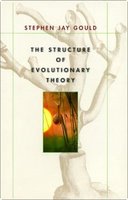The hardest part of being a vegetarian is trying to order and obtain actual, honest-to-god vegetarian food in restaurants - particularly fast-food restaurants. Even in the more expensive restaurants, there seems to be a perception among waiters that "mostly vegetarian" is somehow equivalent to "vegetarian."
Exempli gratia: "Our soup of the day is, ahem, mostly vegetarian. It was made with chicken broth, but all the other ingredients are vegetarian, so you should be fine."
Exempli gratia: "Our soup of the day is, ahem, mostly vegetarian. It was made with chicken broth, but all the other ingredients are vegetarian, so you should be fine."
You should be fine. That fucking kills me. The waiter thinks it's fine if I get a little meat with my dinner. Awesome.
I also love when waiters give you language of equivocation when you are asking about a particular menu item. Q. "Does your pizza sauce have meat in it?" A. "Hmm, probably not." This is usually followed by, "You should be fine."
And that's what you get in most nice restaurants where the chefs have been to school. The average fast-food restaurant is so vegetarian unfriendly that it is almost not worth trying.
For example, as a little experiment, go into any KFC in America and ask the white-trash 16-year-old behind the counter if KFC has any vegetarian items on the menu. You can bet that this will be the first time the kid has ever heard or contemplated this question.
You will definitely be met with an open-mouthed blank stare and, perfectly executed in accordance with section VII-A, subpart (b)(iii) of the KFC instructional 3-ring binder written entirely by one Harland Sanders (said subpart being titled, "What To Do If Someone Asks For Vegetarian Selections"), the kid running the register will turn and holler for the manager.
You will definitely be met with an open-mouthed blank stare and, perfectly executed in accordance with section VII-A, subpart (b)(iii) of the KFC instructional 3-ring binder written entirely by one Harland Sanders (said subpart being titled, "What To Do If Someone Asks For Vegetarian Selections"), the kid running the register will turn and holler for the manager.
And just so you know, KFC is petitioning the US Postal Service to create a postal stamp in honor of the good Colonel. Good fucking god.
McDonald's is almost as bad for vegetarian items, although they do have some salads and yogurt-and-fruit thingies that a vegetarian could eat if she were trapped inside the McDonald's for a prolonged period of time and began to starve.
My grandfather (my dad's dad), who was allergic to cucumbers, used to disparage these phallic green nutritionless vegetables at every opportunity. He'd say, "If you had two hogs, and you fed one of them nothing but cucumbers, and you fed the other one nothing, the one that ate the cucumbers would starve to death first." I feel basically the same way about the vegetarian "options" at McDonald's.
(Although, the last time I was in NY, a McDonald's there was advertising a veggie burger. What they don't advertise is that the veggie burgers are cooked in the same grease and shit that the other "hamburgers" are cooked in. Regardless, I suspect there is very little actual meat being prepared at any McDonald's.)
Taco Bell's Web site provides a decent guide to vegetarian options available at their restaurants, although actually ordering one of these vegetarian possibilities is usually much more difficult in practice.
Asking for a grilled stuft [sic] burrito without the chicken or beef, for example, is usually met with an incredulous, "You don't want any meat?", in the same tone and with the same attitudinal head toss the register operator might use if you asked her to take her shirt off. She will then turn and, in addition to entering the order into the fancy Taco Bell computer system, yell the order to the scary-looking "burrito chef," just to make sure he knows it's not a drill or a joke or something: "Grilled-stuft burrito, no meat!"
Asking for a grilled stuft [sic] burrito without the chicken or beef, for example, is usually met with an incredulous, "You don't want any meat?", in the same tone and with the same attitudinal head toss the register operator might use if you asked her to take her shirt off. She will then turn and, in addition to entering the order into the fancy Taco Bell computer system, yell the order to the scary-looking "burrito chef," just to make sure he knows it's not a drill or a joke or something: "Grilled-stuft burrito, no meat!"
This is almost always followed by an equally incredulous shout from the guy in the back making the burrito who has heard the command from the front and simultaneously read the order ("GRILLED STUFT - NO CHICKEN/BEEF") on the Taco Bell order monitor: "No meat?!" Which prompts the reply: "No, he don't want meat on it."
The idea that someone wouldn't want meat on a burrito is simply beyond their imagination. It feels like what would happen if you went to the gas station and asked them to put Dr. Pepper into your car instead of gas. Very awkward.
The idea that someone wouldn't want meat on a burrito is simply beyond their imagination. It feels like what would happen if you went to the gas station and asked them to put Dr. Pepper into your car instead of gas. Very awkward.
"Why don't you want any meat?"
"Because I'm a vegetarian."
"You're an animal doctor? Say, sweetie, you want mild, hot, or fire?"
Subway actually has a veggie sub on the menu, and some Subways here and there offer a "veggie patty" sandwich (also known variously as the Veggie Max or VeggieMax in some locales). The Veggie Max consists of a pressed vegetarian patty of unknown composition that resembles in size and texture McDonald's (or is it McDonald's's?) ubiquitous McRib, yet unlike the McRib it is allegedly meat-free and loaded with protein. The Veggie Max is kind of like the Big Foot of sandwiches: there are some very poor-quality pictures of it, but no one is really 100% sure it exists.
 Doesn't that look good?! Yeah, I know. Not so much. This was the only picture I could find of the elusive Veggie Max.
Doesn't that look good?! Yeah, I know. Not so much. This was the only picture I could find of the elusive Veggie Max.Even if a particular Subway does offer the Veggie Max, it will rarely appear on their menu boards and even more rarely will you encounter a "sandwich artist" who has actually prepared a Veggie Max. Apparently it is not something they teach you at Subway training school. And because I am the only person in North Carolina who orders the Veggie Max, I am usually met with perplexed stares when I request it. Here is an excerpt from my most recent Subway visit:
Sandwich artist: "Welcome to Subway."
Me: "Thanks. How're you doing today?"
Sandwich artist [apparently perceiving my question to be rhetorical, he gets right to business]: "What can I get for you today?"
Me: "Do you guys have the veggie patty?" [and then with increased uncertainty]: "You know, the Veggie Max?"
Sandwich artist [turns to look at menu board]: "Uh, no, I don't think so."
[Pregnant pause.]
Me [what I'm thinking is, "Well, can you fucking check and make sure?", but what I say is]: "I think you had some in the freezer the last time I came in. Do you mind checking?"
Sandwich artist [what he's thinking is, "Yeah, why don't you just eat one of my balls?", but what he says is]: "Yeah, dude, I'll check."
Ten agonizing minutes pass and the sandwich artist returns from the bowels of the store with two hard-frozen steaming blocks of vegetarian glory wrapped in wax paper.
And this brings me to another problem with the Veggie Max: because it is so infrequently ordered, the patties themselves tend to languish in Subway freezers for so long that by the time they see the light of day, they have taken on a freezer-burned quality not at all dissimilar to what that poor 5000-year-old bastard somebody found frozen in the Alps probably had when they fished him out of that ravine a few years ago. Freeze something for long enough and shit can happen to the molecular structure. This is true of the Veggie Max as well.
And this brings me to another problem with the Veggie Max: because it is so infrequently ordered, the patties themselves tend to languish in Subway freezers for so long that by the time they see the light of day, they have taken on a freezer-burned quality not at all dissimilar to what that poor 5000-year-old bastard somebody found frozen in the Alps probably had when they fished him out of that ravine a few years ago. Freeze something for long enough and shit can happen to the molecular structure. This is true of the Veggie Max as well.
Sandwich artist: "Yeah, I found some, dude. Do you know how long these are supposed to cook?" [He's asking me.]
Me [what I'm thinking is, "You're the fucking sandwich artist." What I actually say is]: I think they usually microwave two of them side-by-side for two minutes."
Sandwich artist [what he's thinking is, "I'd like to put your head in the microwave, you whiny bitch." What he actually says is]: "Ok."
He throws them into the microwave and sets the timer for five minutes. He then says: "What kind of bread do you want?"
Me: "Honey oat. Footlong."
Sandwich artist: "American, Swiss, or provolone?"
Me: "American, please. And can I get extra cheese?" [Protein is scarce when you're a vegetarian. You have to get it where you can.]
Sandwich artist: "Yeah, but it'll be extra."
Me [what I'm thinking is, "Oh, fuck. I'd better check and see how much money I've got. I guess you better leave it off, then." What I actually say is]: "Yeah, that's fine."
He then proceeds to spend five full minutes delicately picking apart the pieces of cheese to put on my sandwich, because he is wearing those ridiculous plastic ill-fitted, unnecessarily large gloves that sandwich artists have to wear at Subway. These gloves do not lend themselves well to precision work.
The next part of the process - where I pick out the vegetable toppings for my sandwich - is equally difficult at every Subway, because veggie patty or no, the sandwich artists usually do not comprehend that a veggie sandwich really needs to be piled pretty high with vegetables or else it is not like a sandwich at all, but rather more like eating one of those starter salads you get at Chinese restaurants that consist entirely of a wedge of iceberg lettuce and about 23 thinly sliced carrot shards. It hits your stomach and disappears like a butter-pecan waffle cone falling into a pit of molten lava. So at Subway, you really have to press them to give you enough vegetables to make the whole thing worthwhile. Accordingly, the next part of the ordering process goes something like this:
Me: "I'd like tomato . . ."
Mr. Sandwich artist picks through what can only be described as 'tomato scraps,' which are the pallid, sad-looking tomato pieces that Subway sells in lieu of actual red ripe tomatoes. He puts like four of them on my sandwich and then looks up at me expectantly.
Me: "Can I, uh, get a few extra tomatoes?"
Sandwich artist: "It'll be extra" [he says in the same tone my grandmother used to use with me when she'd warn me that something was going to ruin my supper].
Me: [involuntarily, first I stare blankly, then I close my eyes in exasperation and nod affirmatively]
He continues making the sandwich. I get two extra tomatoes. At this point, he has correctly discerned that I'm a prick and he's playing passive-aggressive with me.
Me: "Black olives."
He puts 8 black olives on the sandwich.
Me: "Spinach."
Sandwich artist [now tired of the game, he looks absently outside and says through a sigh]: "Uh, yeah, dude, we no longer sell spinach." [Except he pronounces it "spinage."]
Me: "Ok, then, a little lettuce."
He proceeds to put about 2 pounds of lettuce on the sandwich. He buries the sandwich in lettuce. It was like he'd waited his whole fucking life to put lettuce on this sandwich. Apparently somewhere in the Subway 3-ring binder it says "liberally pile lettuce on the sandwich." It probably also says, "This makes the sandwich look heartier and makes up for the lack of other more expensive toppings."
Me: "And a lot of salt and pepper."
He picks up the patented Subway "salt and pepper in one cannister" shaker and gives me two good shakes, depositing on my sandwich a scientifically undetectable amount of either salt or pepper. Realizing now that I have been soundly defeated by the sandwich artist, I relent.
Me: "And I guess that will do it."
The sandwich artist then turns and opens the microwave, producing from it two scorched but now lukewarm vegetable patties of unknown composition and drops them asymmetrically on my pathetic, rather sparse-looking sandwich. He violently folds the sandwich in half - causing 1/3 of the contents to shoot out onto the counter - and cuts the sandwich but stops short of slicing all the way through, such that I'll have to tear the two halves of the sandwich apart once I get into the car, which necessarily will send lettuce all over my lap.
Sandwich artist [feeling conciliatory now that he's soundly defeated another whiny customer]: "I've never had the veggie patty. Is it good?"
Me: "It's not bad. See, I'm a vegetarian . . ."
Sandwich artist [What he's thinking is, "You're an animal doctor?" What he says is]: "I'm not sure, but I think that patty's got some chicken in it, dude. But you should be ok."
And this happens pretty much every single time I go into Subway. It is excruciating. The sad thing is that the Veggie Max, 9 times out of 10, fucking blows. The veggie patty is in fact usually freezer burned to hell, and microwaving something that is freezer burned usually just turns it to shit. I don't even know why I do it. I think I've had my last Veggie Max. Death to the Veggie Max.
* * *
For next time: an excerpt from a new play from Silas T. Comberbache and some interesting facts about Herman Melville that they don't teach you in school (such as, for example, that Moby-Dick is an extended homoerotic metaphor that traces one man's quest to find an inordinately large penis). (Think about it: Moby "Dick" - a sperm whale? And there's much, much more.)
















